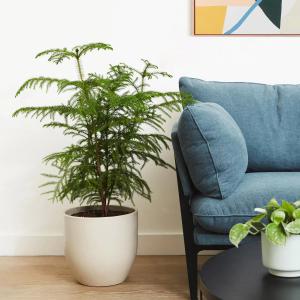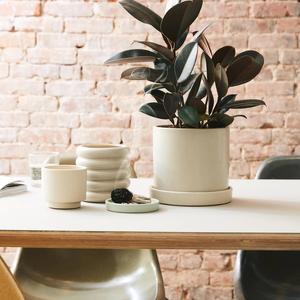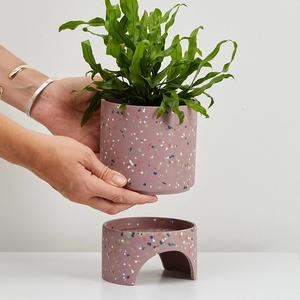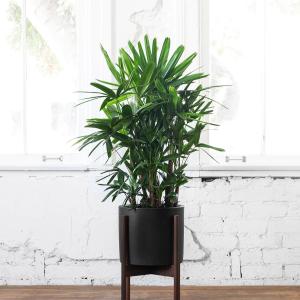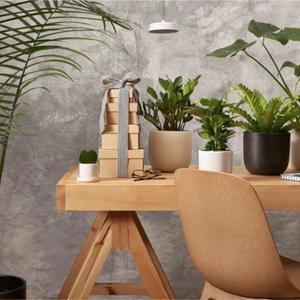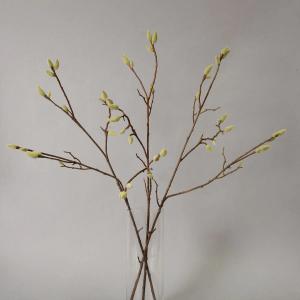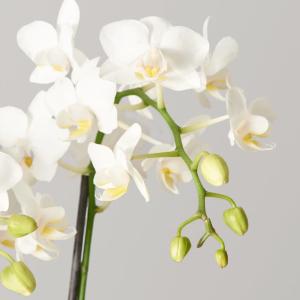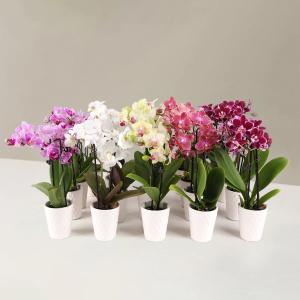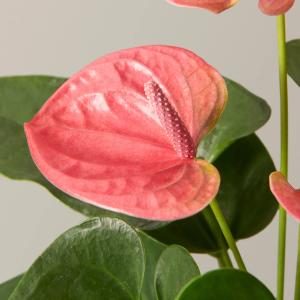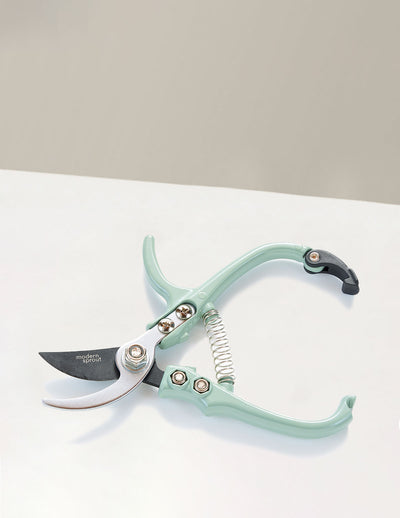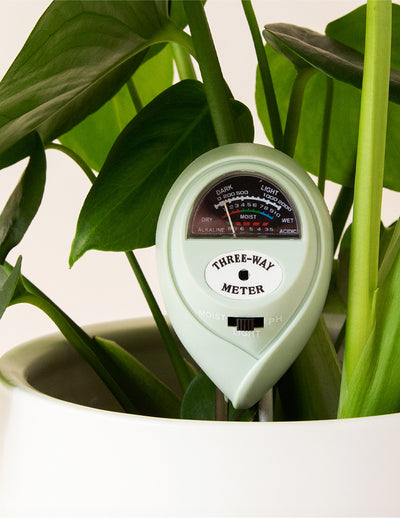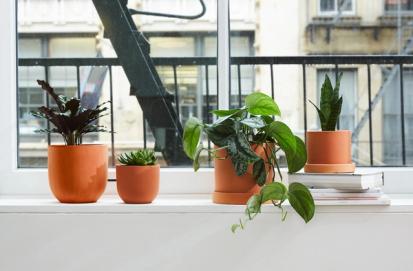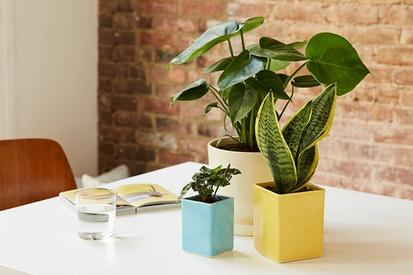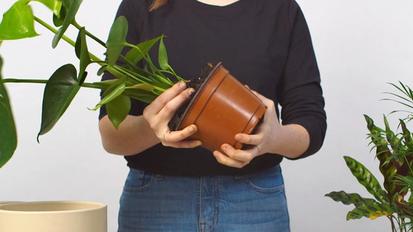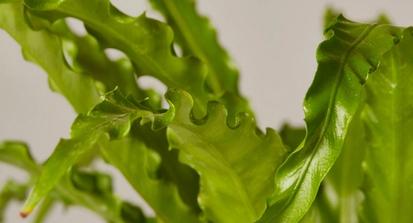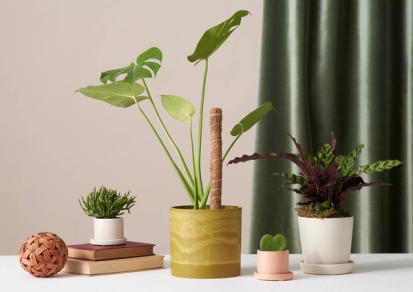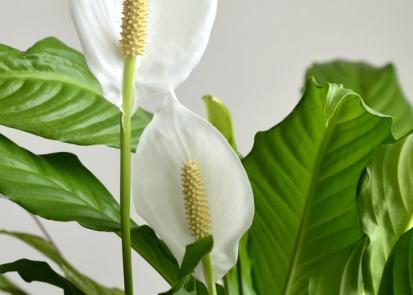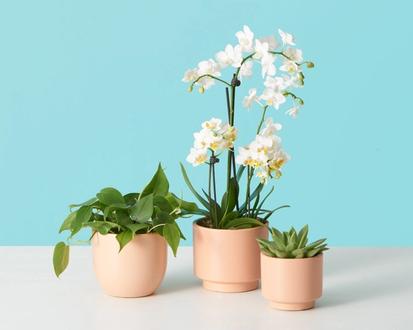Deep cleaning your space in early spring is an annual event many of us participate in. Whether it's an overwhelming chore or meditative practice is up for debate, but there's no denying the delight when it's complete, and your space is all spruced up.
Something that's often overlooked when it comes to spring cleaning is our houseplants. Sure, we know to make changes to our plant care routine come spring; but did you know your houseplants can also benefit from a bit of elbow grease? Let's dive into why and how you should clean your plants.
Houseplants collect dust.
Plants clean the air around them in two ways: physically and chemically. Physically, they purify the air by having a static charge and acting as a dust cling. That's why some plants get so dusty—they're actively removing the physical dust particles from the air surrounding them!
These dust particles can build up over time on the surfaces of your plants and clog their pores called stomata (singular "stoma"). These tiny pores are crucial for many vital plant functions—they allow oxygen to pass through during the process of respiration, they allow carbon dioxide to pass through during the process of photosynthesis, and they allow water vapor to pass through during the process of transpiration. When stomata clog up with dust, these essential gas exchanges can't happen as efficiently as they should, and your plants' health can decline.
Plants’ leaves benefit from dusting.
You can keep your houseplants happy and healthy by wiping their leaves with a soft, damp cloth, or even passing a gentle duster over them, to remove any buildup. If you want to include some soap on your cleaning cloth, that’s fine too; just remember to dilute the soap with water and stay clear of any harsh cleaners. If you wouldn’t wash your hands with it, you shouldn’t use it to wash your plants’ leaves either. Skip any leaf shine products, always, which can clog stomata just like dust would.
Clean leaves every season if you can.
The amount of dust on houseplants can depend on the plant and its environment, but cleaning leaves every few weeks can benefit your plants. That’s a best practice—you can go longer, for example, only cleaning them come spring, but it’s good to at least check your plants’ foliage every few weeks for dust buildup, signs of plants pests, or anything else out of the ordinary. You might find giving your plants the occasional TLC meditative and rewarding.
There are many ways to clean your plants.
You can quickly wipe leaves with a damp cloth or duster or be more detailed. To give the foliage a deep clean, gently support each leaf with one hand underneath and wipe the top, moving away from the stem, very carefully with the other hand. Then repeat, wiping down the underside of the leaf. For delicate or tiny leaves, try using a soft paintbrush.
If you are short on time and know your plants will dry out quickly due to the amount of light they receive, you can gently rinse their leaves under the sink when you water them. A quick rinse can wash away any recent dust buildup. Make sure to give the plants a gentle shake afterward to remove any excess water droplets from their foliage, which can cause unsightly fungal infections or leaf spots.
Even cacti can be spring cleaned.
It may sound perilous, but even spiky houseplants can be cleaned. You may notice your cacti and euphorbias collect less dust. They open their stomata exclusively at night (to conserve water, a necessity to survive their native arid environments) and do not have broad leaves for dust particles to settle on. However, if your cacti are looking relatively dusty, you’ll want to get that layer of gunk off so they can continue to thrive. Run a soft paintbrush around their spikes, or use a can of compressed air, which is available at most hardware stores.
Spring clean your houseplants’ planters, too.
If your plant has been in the same pot for a long time, you may notice white powdery buildup around the planter’s edges. This buildup is not dust but material deposits (also called calcium or lime deposits) from the tap water used to water your plant. It might look unsightly, but it’s harmless—you’ve done nothing wrong in caring for your plant!
Clean your planter by wiping down its edges with a damp cloth. If that doesn’t work to remove the buildup, you can scrub the planter next time it is empty with a solution of vinegar and water or bleach and water. Just don’t take that approach if a plant is still in it—wait until the next time you repot.
If you see a similar-looking buildup on top of the potting soil, it may also be mineral deposits or mold. Gently brush off that top layer of soil to remove it as best you can. If you’re removing a lot, add some fresh soil back on top to even it out and make sure all plant roots are covered.
Repot your houseplants in the spring.
You can also repot your plants. A common misconception, “repotting” your plant does not always mean changing its planter, but sometimes only changing its soil or potting mix. The fresh mix provides new nutrients to help your plant thrive. Repotting your plants (or fertilizing your plants to deliver those nutrients) is a great spring activity since it coincides with the start of the growing season.
Words By The Sill
Empowering all people to be plant people—a collection of articles from The Sill’s team of plant experts across a variety of plant care topics to inspire confidence in the next generation of plant parents. Welcome to Plant Parenthood™.


